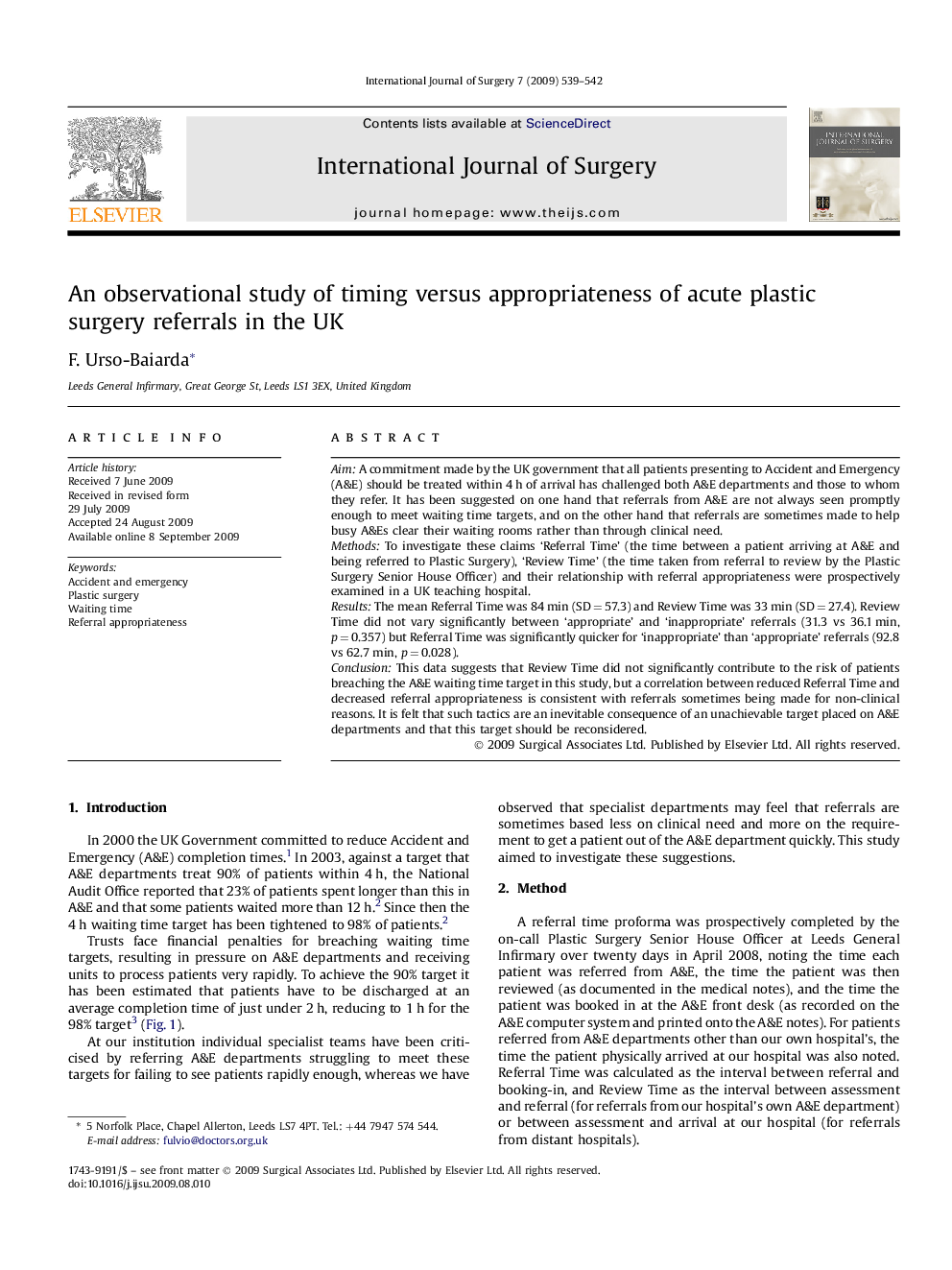| Article ID | Journal | Published Year | Pages | File Type |
|---|---|---|---|---|
| 4287910 | International Journal of Surgery | 2009 | 4 Pages |
AimA commitment made by the UK government that all patients presenting to Accident and Emergency (A&E) should be treated within 4 h of arrival has challenged both A&E departments and those to whom they refer. It has been suggested on one hand that referrals from A&E are not always seen promptly enough to meet waiting time targets, and on the other hand that referrals are sometimes made to help busy A&Es clear their waiting rooms rather than through clinical need.MethodsTo investigate these claims ‘Referral Time’ (the time between a patient arriving at A&E and being referred to Plastic Surgery), ‘Review Time’ (the time taken from referral to review by the Plastic Surgery Senior House Officer) and their relationship with referral appropriateness were prospectively examined in a UK teaching hospital.ResultsThe mean Referral Time was 84 min (SD = 57.3) and Review Time was 33 min (SD = 27.4). Review Time did not vary significantly between ‘appropriate’ and ‘inappropriate’ referrals (31.3 vs 36.1 min, p = 0.357) but Referral Time was significantly quicker for ‘inappropriate’ than ‘appropriate’ referrals (92.8 vs 62.7 min, p = 0.028).ConclusionThis data suggests that Review Time did not significantly contribute to the risk of patients breaching the A&E waiting time target in this study, but a correlation between reduced Referral Time and decreased referral appropriateness is consistent with referrals sometimes being made for non-clinical reasons. It is felt that such tactics are an inevitable consequence of an unachievable target placed on A&E departments and that this target should be reconsidered.
